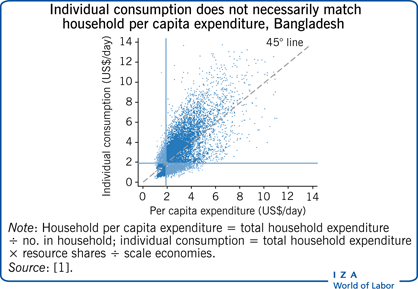Elevator pitch
A key element of anti-poverty policy is the accurate identification of poor individuals. However, measuring poverty at the individual level is difficult since consumption data are typically collected at the household level. Per capita measures based on household-level data ignore both inequality within the household and economies of scale in consumption. The collective household model offers an alternative and promising framework to estimate poverty at the individual level while accounting for both inequality within the household and economies of scale in consumption.
Key findings
Pros
Accounting for intra-household inequality and economies of scale is critical to measuring individual-level poverty.
Poor individuals may live in non-poor households; so, poverty measures based on per capita household consumption or equivalence scales may misclassify poor individuals.
The collective household model provides a framework to estimate individual-level poverty from household-level data.
Evidence suggests that poverty measures estimated using the collective model can improve upon per capita poverty measures.
Cons
The data requirements to estimate poverty at the individual level may be burdensome.
The collective model per se does not account for differences in needs across household members (e.g. children versus adults).
Identification results assume separability between consumption and other critical aspects of household behavior (e.g. labor supply, savings, and home production); this is usually not the case.
Individual welfare is multidimensional; both per capita poverty measures and those estimated using the collective model focus only on consumption.
